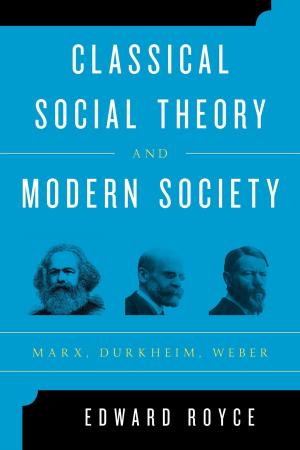Workers of Wonders
A Model for Effective Religious Leadership from Scripture to Today
Nonfiction, Religion & Spirituality, Christianity, Church, Clergy, Judaism, History, Inspiration & Meditation, Faith| Author: | Byron L. Sherwin | ISBN: | 9781461622581 |
| Publisher: | Rowman & Littlefield Publishers | Publication: | September 24, 2004 |
| Imprint: | Rowman & Littlefield Publishers | Language: | English |
| Author: | Byron L. Sherwin |
| ISBN: | 9781461622581 |
| Publisher: | Rowman & Littlefield Publishers |
| Publication: | September 24, 2004 |
| Imprint: | Rowman & Littlefield Publishers |
| Language: | English |
Why do people follow a leader, particularly a religious leader? Is it because of personality, or a particular vision or set of values, or perhaps a felt need for direction or authority? And why, given that Americans are still an overwhelmingly religious people, is the clergy declining in influence? Sherwin argues that what is missing is the perception that religious leaders today are capable of working wonders.
Sherwin supports his claim by showing that throughout the history of the Jewish people, certain leaders were regarded as having wonder-working ability; this was an essential feature of a "holy person." Sherwin leads the reader through five periods of Jewish history: the era of biblical prophets, Jesus and first-century Israel; Babylonian rabbis of the third and fourth centuries; the east European Hasidic Masters of the eighteenth and nineteenth centuries, and twentieth century North African rabbis. In all cases, the moral authority of the leaders came primarily from popular belief in their power to work wonders for the people.
Sherwin applies history to the current situation. If the clergy is to be re-empowered, to reclaim leadership and authority as holy people, they must reassert the ability to work wonders. This does not require dramatic miracles, but deeds that might well be perceived by people as nothing short of miraculous: saving a marriage, finding someone a job, finding homes for the homeless, bringing hope to the hopeless.
This is a book that every member of the clergy and every religious leader should read, ponder and take to heart.
Why do people follow a leader, particularly a religious leader? Is it because of personality, or a particular vision or set of values, or perhaps a felt need for direction or authority? And why, given that Americans are still an overwhelmingly religious people, is the clergy declining in influence? Sherwin argues that what is missing is the perception that religious leaders today are capable of working wonders.
Sherwin supports his claim by showing that throughout the history of the Jewish people, certain leaders were regarded as having wonder-working ability; this was an essential feature of a "holy person." Sherwin leads the reader through five periods of Jewish history: the era of biblical prophets, Jesus and first-century Israel; Babylonian rabbis of the third and fourth centuries; the east European Hasidic Masters of the eighteenth and nineteenth centuries, and twentieth century North African rabbis. In all cases, the moral authority of the leaders came primarily from popular belief in their power to work wonders for the people.
Sherwin applies history to the current situation. If the clergy is to be re-empowered, to reclaim leadership and authority as holy people, they must reassert the ability to work wonders. This does not require dramatic miracles, but deeds that might well be perceived by people as nothing short of miraculous: saving a marriage, finding someone a job, finding homes for the homeless, bringing hope to the hopeless.
This is a book that every member of the clergy and every religious leader should read, ponder and take to heart.















